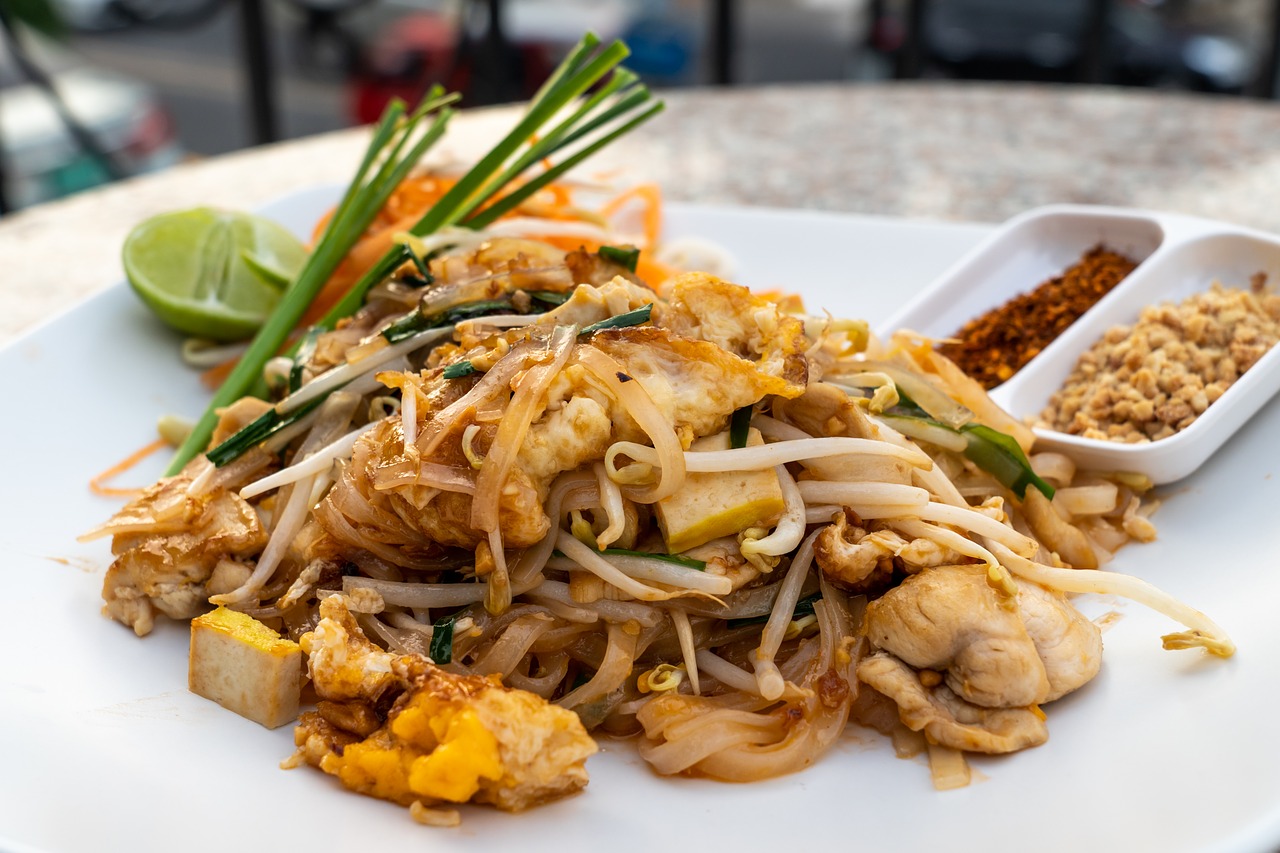Pad Thai, Thailand’s quintessential street food, is a dish that tells a story of culinary innovation, national identity and the blending of cultures. Known for its complex interplay of textures and flavours – sour, sweet, savoury and spicy – Pad Thai has transcended its local origins to become one of the world’s most beloved noodle dishes.
The origins of Pad Thai are as layered as its flavours. While noodle dishes were not native to Thai cuisine, having been introduced by Chinese traders, Pad Thai represents a uniquely Thai twist on noodle stir-fry. Its creation is often credited to a period of nationalism and economic innovation in the 1930s and 1940s. Seeking to promote Thai rice noodles and reduce rice consumption amid economic pressures, the government launched a campaign to create a national dish that was affordable, nutritious and distinctly Thai. Pad Thai, with its use of rice noodles, local ingredients like tamarind, palm sugar, fish sauce and a mix of protein options, embodied these goals and quickly gained popularity across the country.
The dish typically consists of stir-fried rice noodles with eggs, tofu, and shrimp or chicken, flavoured with tamarind paste, fish sauce, dried shrimp, garlic, red chilli pepper, and palm sugar, garnished with lime wedges, roasted peanuts, and fresh herbs. This combination of ingredients not only offers a balance of flavours and textures but also reflects the rich biodiversity of Thailand and its cultural openness.
The spread of Pad Thai beyond Thailand’s borders can be attributed to the global movement of Thai people and the growing interest in Thai cuisine, recognised for its emphasis on fresh ingredients and robust flavours. As Thai restaurants popped up around the world, Pad Thai became a signature dish.
Pad Thai’s story is also one of resilience and adaptability. From its origins as a dish born out of economic necessity and nationalist ambitions, it has evolved into a symbol of Thai creativity and the country’s rich gastronomic heritage. It serves as a reminder of how food can be a powerful tool for cultural expression and connection, capable of bringing people together across geographical and cultural divides.







Click here to change your cookie preferences